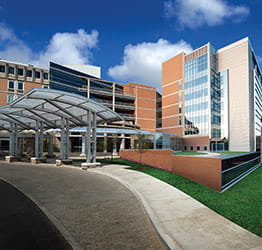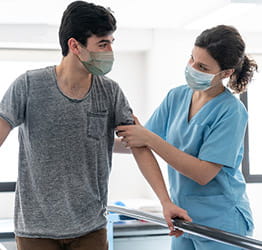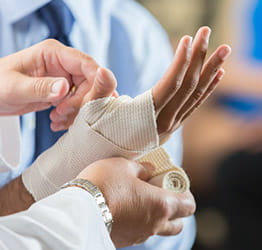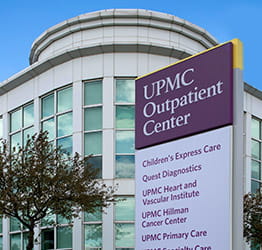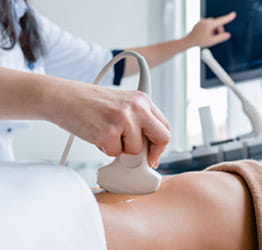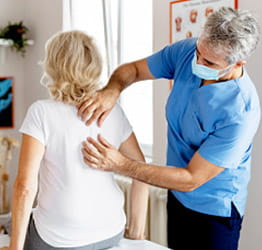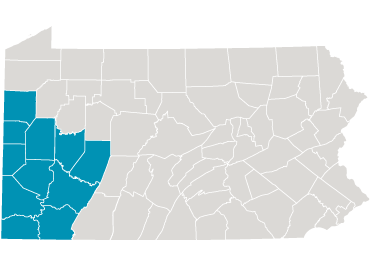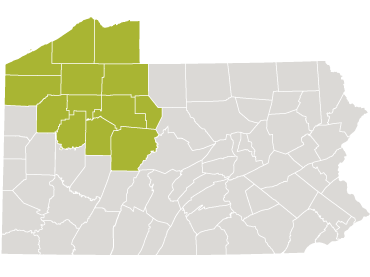Your Emergency Department Stroke Care
If you are having a stroke, treatment will typically begin in the Emergency Department. Your stroke care team will quickly diagnose your condition and provide expert treatment to improve your chances of recovery.
After you arrive in the Emergency Department, your care team will:
- Perform a physical and neurological exam.
- Order imaging or other tests.
- Review your health history and medications.
Diagnostic testing
Your doctor may request imaging tests to examine how blood flows through the blood vessels in your brain and check for signs of stroke.
Diagnostic tests for stroke include:
- CT or MR angiogram — Also known as arteriography or an arteriogram, this test uses x-rays or magnets and a special contrast dye to look for problems with the blood vessels in your brain.
- CT scan — A test that creates images of your brain and is used to diagnose stroke, brain aneurysm, or another type of brain injury.
- Doppler ultrasound — A noninvasive test that uses ultrasound waves to measure blood flow through your arteries and veins.
- MRI — Uses a combination of large magnets, radio frequencies, and a computer to produce detailed images of your brain.
Your stroke treatment
After diagnosing a stroke, your doctor will develop a treatment plan. The goals of stroke treatment are to restore blood flow by either removing the blockage or stopping the bleeding, while also preventing permanent brain damage that can lead to disability and death.
Your stroke treatment will depend on:
- The location, extent, and duration of the blockage or bleeding.
- Your overall condition.
Treatment may include:
- Medication — Treats ischemic stroke by dissolving blood clots. Medications may also be used to treat stroke-related symptoms.
- Minimally invasive endovascular surgery — Treats ischemic stroke using thin, flexible tubes called catheters.
- Stroke neurosurgery — Surgically bypasses and opens blocked blood vessels in the brain and controls bleeding in some types of hemorrhagic strokes.
Depending on the type of stroke care you need, you may be transferred to another hospital with more advanced stroke-care capabilities.
Your Hospital Stay After Stroke Treatment
After your stroke treatment, you will need to stay in the hospital for monitoring and ongoing care. The length of your hospital stay will depend on the extent of your stroke, the treatment you received, your recovery, and other factors.
Levels of inpatient stroke care at UPMC
At UPMC hospitals, there are three levels of post-stroke inpatient care, in order of care level:
- Stroke intensive care — Hourly monitoring in the stroke or neurological Intensive Care Unit (ICU).
- Step-down care — Monitoring every two hours in the step-down or progressive care unit.
- Acute care — Monitoring every four hours in the acute care unit. Most patients are discharged from the acute care unit.
You will be transitioned through these levels based on your care needs and your rate of recovery. If your condition worsens while in the step-down or acute care units, your care team will transfer you back to the ICU or step-down unit for a higher level of care.
Your Stroke Recovery
Stroke recovery is different for everyone. Our team will help you develop a personalized plan to optimize your stroke recovery, tailored to your unique symptoms, living situation, and care needs.
Stroke discharge planning services
When you are in the acute care unit, you and your family will meet with a member of our discharge planning team to discuss the next steps for your care.
Your discharge planning team may include:
- Case managers — Work with your medical team to assess your condition and help you plan for rehabilitation and ongoing recovery.
- Home health consultants — Assess your needs and eligibility for home health care.
- Rehabilitation liaisons — Assess your needs and eligibility for rehabilitation care.
- Social workers — Assess your living situation, needs, and eligibility for supportive services during your recovery.
Telestroke care
UPMC community hospitals employ advanced telestroke communication technology, allowing on-site Emergency Department doctors to remotely connect with stroke experts at UPMC’s academic medical centers, who can quickly and accurately diagnose strokes.
This technology ensures that patients at UPMC community hospitals receive the same quick access to trained stroke experts as those at large academic medical centers, reducing delays in diagnosis and treatment when every minute counts.
How does telestroke care work?
When you arrive at the hospital’s Emergency Department, your on-site doctor will assess your condition. If your doctor suspects you are having a stroke, they will initiate a telestroke call with a UPMC stroke expert.
What happens during a telestroke visit?
Through video, a UPMC neurologist who specializes in treating stroke can:
- Ask you questions about your symptoms.
- Ask your on-site doctor questions.
- Review brain imaging and lab work.
- Assess the severity of your symptoms and whether a stroke caused them.
- Guide your on-site doctor on whether to provide treatment or transfer you for further evaluation.
Follow-up stroke care
After receiving emergency stroke care, you will need follow-up care to monitor your recovery and reduce your risk of a future stroke. Before you are discharged from the hospital, your discharge planner will schedule follow-up appointments for you.
UPMC’s team of stroke experts will provide referrals to connect you with the care and support you need at each stage of your stroke care journey.
Your follow-up appointments will include visits with:
- Your primary care provider (PCP) — The purpose of this visit is to make your PCP aware that you received stroke care in the hospital, update your medication list, process any necessary referrals for follow-up care, and monitor your recovery.
- A stroke physician — Within four to eight weeks of your hospital discharge, you will meet with a stroke physician who will monitor your recovery and work with you to reduce the risk of a future stroke. Most patients will have a follow-up visit with their stroke physician around six months after discharge from the hospital, with additional visits scheduled as needed to address specific concerns.
Specialized care during your recovery
Depending on the extent of your stroke, your recovery needs, and the type of stroke treatment you had, you may need to meet with a specific type of stroke expert for ongoing care.
Stroke experts include:
- Stroke neurologist — Your stroke neurologist monitors your recovery progress, addresses any issues that arise, and works to prevent future strokes.
- Vascular neurologist — If you had a thrombectomy procedure to remove a blood clot or another neurointerventional procedure performed using a catheter, you will need to meet with the vascular neurologist who performed your procedure. Imaging tests may be necessary to ensure your treatment was successful.
- Neurosurgeon — If you had a neurosurgical procedure, such as a craniotomy, to treat your stroke, you will need to meet with the neurosurgeon who performed your procedure.
Stroke Rehabilitation Services
Our rehabilitation liaisons, physical medicine and rehabilitation physicians, and stroke neurologists will help you and your family decide which rehabilitation program is right for you.
There are several types of rehabilitation programs, including:
- Hospital programs — Inpatient programs provided through rehabilitation hospitals or by rehabilitation units in acute care hospitals.
- Nursing facility programs — Like hospital programs, you reside at the facility during rehabilitation. Nursing facility programs vary significantly in the rehabilitation services they offer, so obtaining specific information about each one is essential.
- Outpatient programs — Allow you to live at home while receiving a full range of services when you visit a hospital outpatient department, rehabilitation facility, or day hospital program.
- Home-based programs — Allow you to live at home and receive rehabilitation services from visiting professionals. An important advantage of home programs is that you learn skills in the same place where you will use them.
- Individual rehabilitation services — If you only need certain types of rehabilitation services, such as regular physical therapy or speech therapy, they are available on an individual basis in outpatient and home care programs.
Recovery and rehabilitation needs are different for everyone. To address changing needs throughout your recovery journey, you may need to participate in multiple rehabilitation programs over time or temporarily return to a higher level of rehabilitation care.
Cryptogenic stroke care
If you have been diagnosed with a cryptogenic stroke — a type of stroke that occurs without a known cause — you may be referred to a specialized multidisciplinary clinic for further testing. A team of stroke, cardiovascular, and other medical specialists will order blood tests, imaging studies, and other tests to find the cause of your stroke.
If a cause is identified, your team will develop a treatment plan to treat the underlying condition that led to your stroke and reduce your risk of future complications.
Why Choose UPMC for Stroke Care?
When you choose UPMC for stroke care, you will receive:
- Access to world-class neuroscience expertise — UPMC is among the world’s best multidisciplinary stroke centers. When surgery is necessary, our neurosurgery team is experienced in advanced treatments, including traditional procedures and investigational approaches that are not widely available.
- A full range of treatment options — We offer nonsurgical and minimally invasive stroke care, as well as traditional open surgical procedures, allowing us to effectively treat all types of strokes while reducing your risk of complications.
- Multidisciplinary care — We partner with neurologists, rehabilitation specialists, and other medical experts to provide complete care that optimizes your recovery and quality of life.
By UPMC Editorial Staff. Last reviewed on 2025-10-23.





